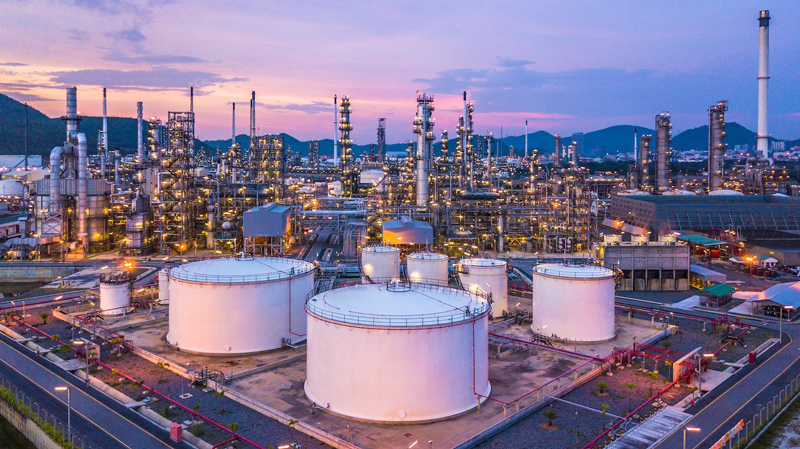The Refining & Petrochemical Industry is a cornerstone of the global economy, transforming crude oil and natural gas into essential fuels, chemicals, and materials that underpin modern life. This sector comprises two interconnected yet distinct domains:
Refining:
Purpose: Refineries process crude oil through techniques like distillation, catalytic cracking, and reforming to separate and convert hydrocarbons into usable products.
Key Products: Transportation fuels (gasoline, diesel, jet fuel), heating oil, lubricants, asphalt, and feedstocks for petrochemicals.
Processes: Primary distillation separates crude into fractions, while secondary processes (e.g., hydrocracking) enhance yield and quality.
Petrochemicals:
Purpose: Petrochemical plants convert refining byproducts (naphtha, ethane, propane) or natural gas liquids into base chemicals via steam cracking or catalytic reforming.
Key Products: Building blocks like ethylene, propylene, benzene, and xylene, which are used to manufacture plastics, synthetic rubber, fertilizers, pharmaceuticals, and textiles.

In the refining and petrochemical industry, valves are critical for controlling fluid flow under harsh conditions, including high temperatures, pressures, and corrosive environments. Below is an organized overview of the key valve types used, their functions, and typical applications:
1. Gate Valves
Function: On/off control with minimal pressure drop. Not suitable for throttling.
Design: Linear motion with a rising stem and wedge-shaped gate.
Applications: Isolation in pipelines, steam systems, and crude oil handling.
2. Globe Valves
Function: Precise flow regulation and throttling.
Design: Spherical body with a disc moving perpendicular to flow.
Applications: Cooling systems, feed lines, and frequent adjustment points.
3. Ball Valves
Function: Quick shut-off with tight sealing.
Design: Rotating ball with a bore; fire-safe options available.
Applications: High-pressure gas lines, LNG, and corrosive fluids.
4. Check Valves
Function: Prevent backflow (unidirectional flow).
Types: Swing, lift, or dual-plate designs.
Applications: Pump/compressor discharge, reactor outlets.
5. Butterfly Valves
Function: Flow control in large pipes with compact design.
Design: Rotating disc; triple-offset for high-performance.
Applications: Cooling water, bulk hydrocarbon transfer, low-pressure systems.
6. Plug Valves
Function: On/off or diverting flow in abrasive services.
Design: Cylindrical or tapered plug; lubricated or non-lubricated.
Applications: Slurries, coker units, frequent operation points.
7. Knife Gate Valves
Function: Cut through viscous/solid-laden fluids.
Design: Sharp-edged gate for slurry handling.
Applications: Wastewater, heavy oil, and slurry lines.